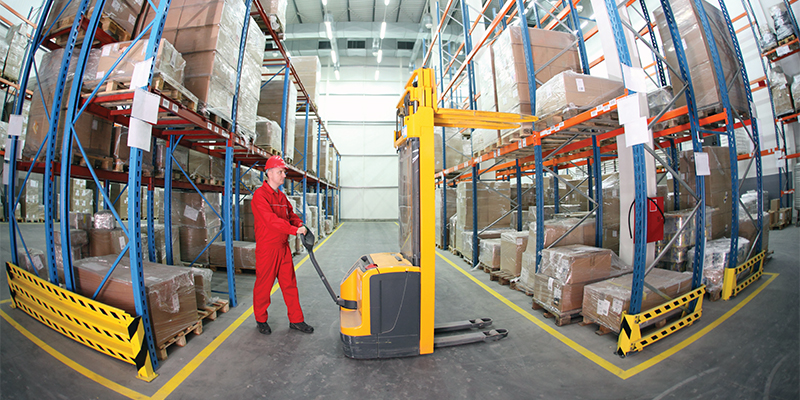Amid a strong economy and surging demand for consumer products, industrial remains one of the hottest segments in the commercial real estate industry. That’s in spite of a minor cooling off that’s predicted for 2019 after several years of exceptional growth powered by the rise of e-commerce and the need for last-mile distribution facilities.
The NAIOP Industrial Space Demand Forecast for the first quarter of 2019 sees demand remaining steady at 57 million square feet of absorption per quarter, roughly the same as 2018. Additionally, the national vacancy rate is just 7 percent.
That strong demand for space is pushing developers of industrial properties to innovate in many ways.
For example, Development magazine took a look at multistory distribution centers in the Winter 2017-2018 issue. In “Industrial Development Goes Vertical,” author Jay Todisco, AIA, LEED AP, an executive vice president with Ware Malcomb, examined how “a warehouse on top of a warehouse” could be used in areas where land costs are high.
Additionally, demand for flexible on-demand space is growing as retailers aim to deliver goods faster and logistics companies struggle with last-mile distribution challenges.
Within the next five to 10 years, “on-demand warehousing services will become a reasonable alternative to traditional leasing,” wrote Ben Conwell, the senior managing director and e-commerce advisory group leader for Cushman & Wakefield, in an article for Inbound Logistics. “They will not dominate the industry, but they will grow to fill a gap in the market. Like the impact that Airbnb has had on hotels, the platforms will serve as a disruption, and the traditional industry will have to adapt.”
Companies are already rushing in to fill this niche, according to an article from Bisnow. For example, UPS launched Ware2Go last year. It’s a service that recruits and certifies warehouses for merchants.
In addition to new designs and uses for industrial buildings, high-tech solutions are making the transportation and storage of goods more efficient.
According to a recent report from Globe Street, Siemens AG and Honeywell International Inc. have built robots that can pull packages from trucks and place them on conveyor belts in warehouses. This could reduce the need for one of the most physically challenging jobs in the distribution sector.
While robotics will certainly play a major role in logistics in the future, full automation isn’t here yet. According to a report from Reuters, robots only perform a fraction of the work in Amazon’s 110 warehouses, 45 sorting centers and 50 delivery stations in the U.S. The company says it will be at least a decade before technology advances to the point where full automation would be feasible.
However, the company is already deploying devices that can replace humans for filling orders.
Reuters reports that Amazon has started using new technology in a small number of warehouses that “scans goods coming down a conveyor belt and envelops them seconds later in boxes custom-built for each item.” The report says the company could install the machines in 55 U.S. fulfillment centers, possibly eliminating 1,300 jobs in the process.
In April, Amazon launched a digital freight brokerage website, freight.amazon.com, according to a report from FreightWaves. FreightWaves’ analysis found that prices on freight.amazon.com are undercutting the current market by around 30%.
“We think that building a third-party logistics network will allow Amazon to blow out retail peak season,” FreightWaves’ John Paul Hampstead wrote. “By taking no margin during soft freight seasons and keeping trucks running, AMZN will have capacity locked up and ready to move truly staggering e-commerce volumes in November and December.”
NAIOP Research Director Shawn Moura contributed to this report.














